und Wörterbuch
des Klassischen Maya



Abstraction through the Merger of Iconic Elements in Forming New Allographs: The Logogram 539 <WAY>
Research Note 12
DOI: http://dx.doi.org/10.20376/IDIOM-23665556.19.rn012.en
Sven Gronemeyer (Rheinische Friedrich-Wilhelms-Universität, Bonn; La Trobe University, Melbourne)
One contributor to the calligraphic complexity of Classic Maya writing is the ability afforded by the script to create allographs. There are allographs of distinct iconic origin, as best illustrated for example by the abundance of different graphs for the syllabogram u(Stuart 1990:219-212), or the line of evidence in identifying three different sa signs (Schele 1991:21-23). In any classificatory scheme, such allographs require unique sign identifiers.
On the other hand, the script also demonstrates a principle of graphic allomorphism, i.e., the manipulation of the graph outline in order to create a related, derived allograph while keeping the graph’s identity (the iconic elements that make it unique). The best-known principle is the ‘head variant’ transformation of graphs (Stuart 1995:52, 71). The segmentation of multipartite graphs was first described as “superimposition” (Stuart 1995:38, 65), i.e., the ‘overlay’ of one part of a graph with another graph. Just recently, it has been demonstrated that individual graph elements can be used as fully individual allographs (Prager & Gronemeyer 2018). Perhaps the idea of a ‘three-dimensional’ reading order is only a misperception of standardized sign transpositions (1). The segmentation principles are best described in a taxonomy (Prager & Gronemeyer 2018:157-164) based on full forms which may reflect, at least in parts, emic conceptions of graph morphology as well.
Allography by Segmenting Graphs
For example, the sign 74 (2), the syllabogram ma, has in its full form a vertically ordered, tripartite configuration. In our new classification scheme, the suffix ‘tv’ (= tripartite vertical) is added to specify this full form. From this, either the top or bottom part can be used (old T74 and T142, respectively), indicated by ‘tt’ (= tripartite top) or ‘tb’ (= tripartite bottom). Both segments can also frame another graph in the center (‘tf’ = tripartite frame), or the upper part can be further subdivided (‘dt’ = division one-third). In rare instances, this primary segmentation axis is rotated and only the left half of the full form 74tv is retained (‘bl’ = bipartite left), e.g., on TIK: St. 10, G10.
The advantage of this new classification scheme is that one distinct hieroglyph and all its derived variants have only one sign number, which is then distinguished by a suffix to denote a specific allograph. This makes the project’s new sign catalogue – currently under development – more systematic and allows comparison between allograph formations for structurally parallel hieroglyphs (e.g. sign 68, the syllabogram tz’a, old T68). In the process of segmentation, the original outline of the part that now represents the full form pars pro toto is retained and the individuality of the hieroglyph is thus guaranteed.
 |
→ |  |
|||
|---|---|---|---|---|---|
| top part | two-third | ||||
| 74tt | 74dt | ||||
| ↑ | |||||
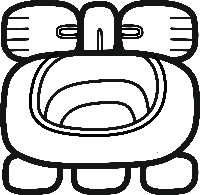 |
→ | 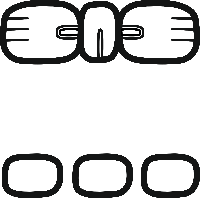 |
 |
||
| 74tv | left part | ||||
| ↓ | 74bl | ||||
 |
|||||
| lower part | |||||
| 74tb |
Allography by Extracting Iconic Elements of the Graph
Another principle of allographic reduction is the extraction or simplification of certain diagnostic elements or iconic markers that make the graph unique. While this process still ensures the graph’s individuality, its outline changes. Hence, this principle taxonomically constitutes a possible transformation, along with the animation of graphs as head variants (Prager & Gronemeyer 2018:165-170) or multiplication, rather than an instance of segmentation.
Extractions are notable for forming allographs among graphs that sui generis have head variants, because they depict and often refer to animals or supernatural beings, etc. Frequently, the element being extracted is the eye (Figure 2), as with signs 524 HIX and 680, for which Stuart (2012a:4) has proposed the reading BOLAY.
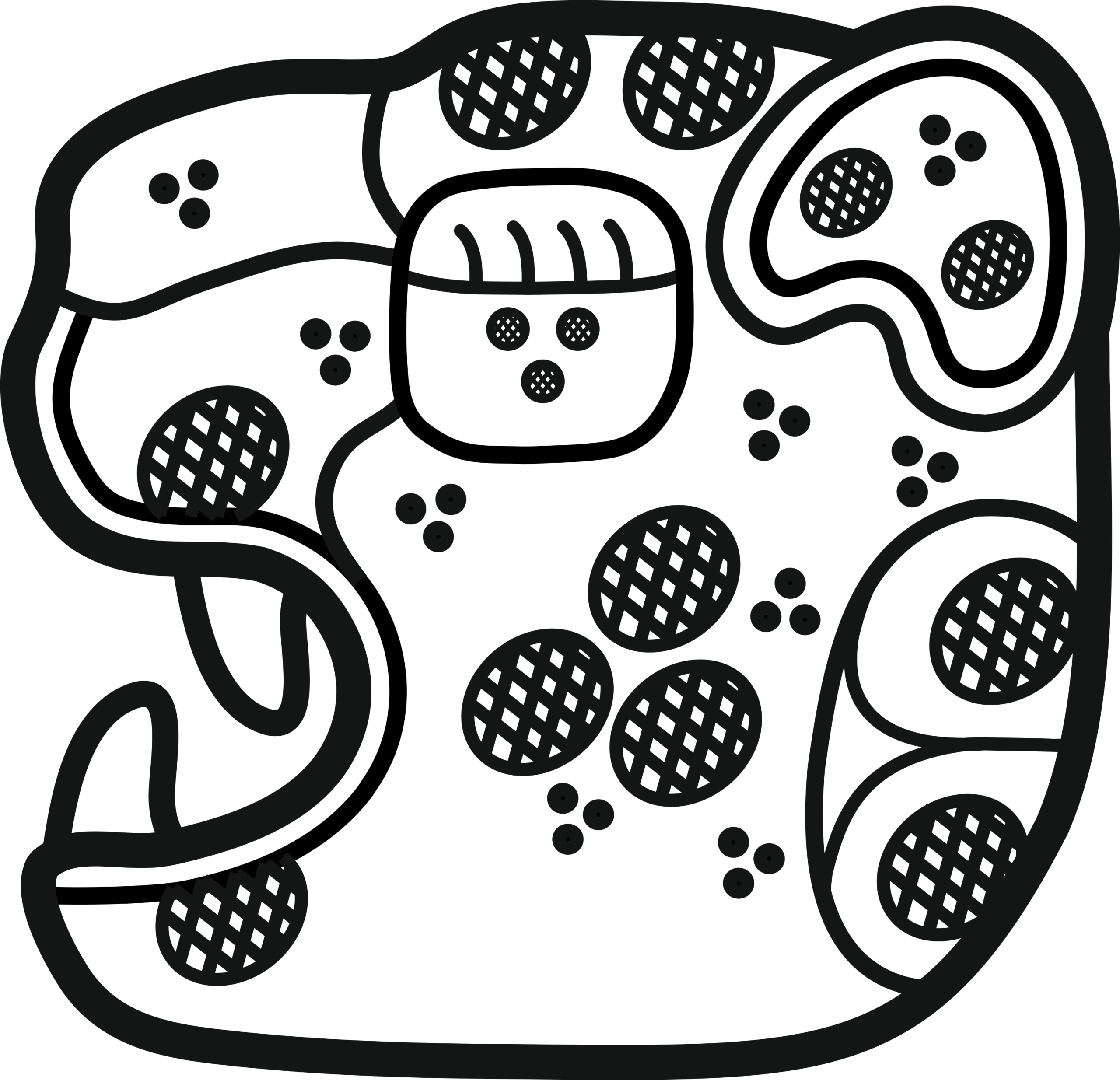 |
→ | 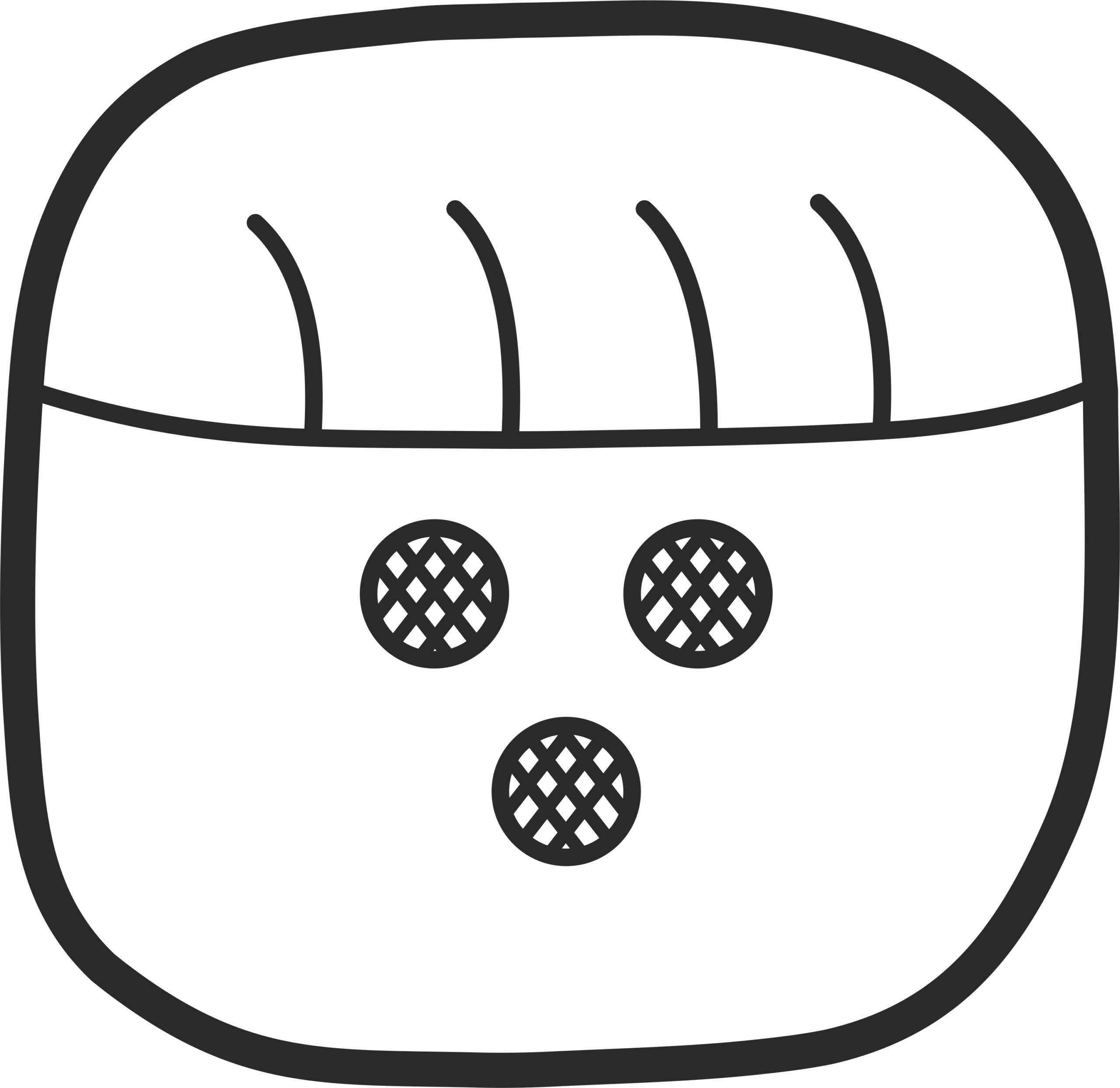 |
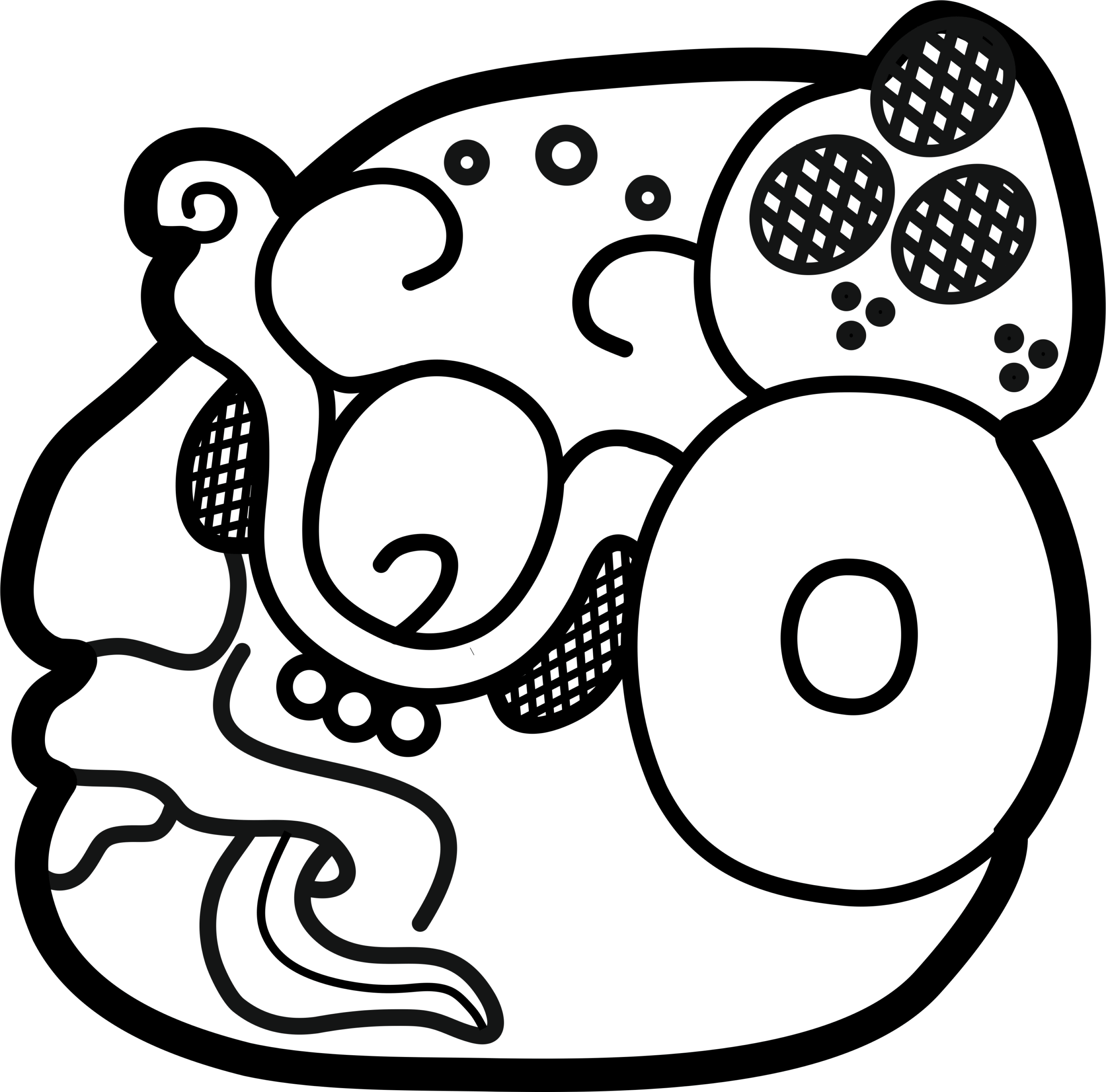 |
→ | 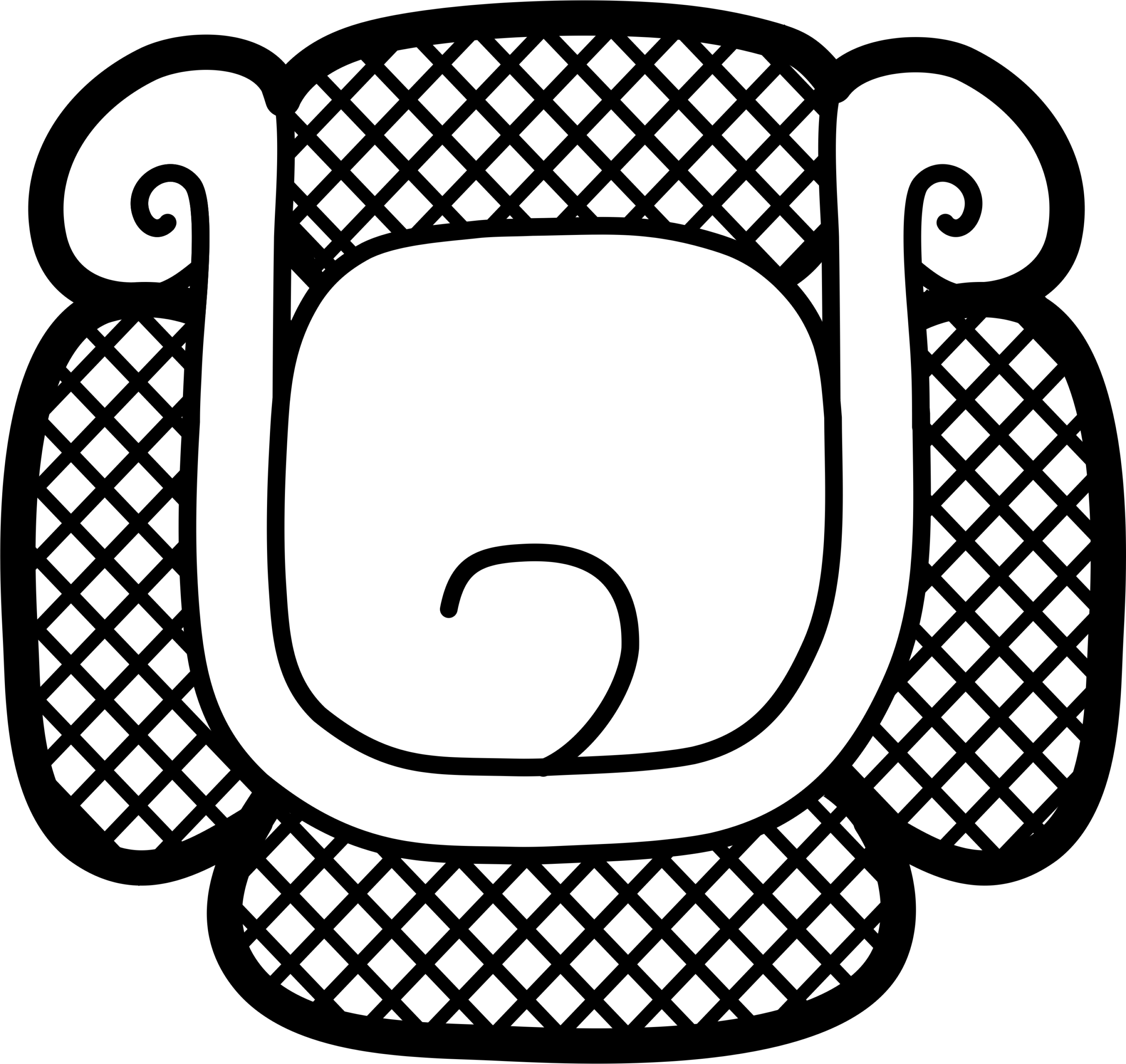 |
|---|---|---|---|---|---|
| full form | extraction | full form | extraction | ||
| 524st | 524ex | 680st | 680ex | ||
| a | b |
The functional equivalence of 524st and 524ex is proven by spellings on several painted ceramics of the emblem glyph of Hix Witz (Martin & Reents-Budet 2010:fig.4), associated with ruler Janab Ti’ O’. The specific rendition of the eye in the full head form 524st is also a diagnostic separator from the otherwise very similar sign 751 BALAM. 680st and 680ex substitute in calendrical contexts: as the ‘feline form’ of Glyph C (Linden 1996: tab. 3; Thompson 1950:figs.36-37), and as the patron for the month Wo in the ISIG on PMT: Mon. 5 (Thompson 1962:282). While Thompson (1962) did not classify the head variant of sign 524, old T680 and T1018c can now be merged under one sign number, 680. Here, the reduced variant combines the ‘god eye’ marker, the surrounding cruller typical of the ‘Jaguar God of the Underworld’ (Schele & Miller 1986:50), and black markings (3).
Other integral parts that may be extracted include the ear, e.g., with the syllabogram 1506 e, or qualitative markers, as with sign 544 K’IN(Figure 3). Thompson (1962:322) primarily considered the toad head glyph T741a to be the zoomorphic form for Winal, but his catalogue also included instances where the syllabogram is written and – moreover – conflated with other signs, e.g., 764 CHAN. Because of the strict relation between a sign and its graphs, WINAL/ WINIK is reclassified in our catalogue as 1519, as 1506ex never substitutes for it in calendrical contexts (4). The development of 1506ex is not seen until the Codices, where the graph with just the parotoid gland is used in u-che-e, u-che’ “his tree” (C. Ma. 42c), for example. Its final attestation is in the Landa ‘alphabet’.
The head of the Sun God is typically displayed with one or two sun markers to designate him as bright and hot (Houston, Stuart & Taube 2006:17). There are substitutions of 544st and 544ex in a variety of functionally equivalent contexts, notably within the month name Yaxk’in, where its reading is strengthened by a 116 ni complement, e.g., QRG: St. D, A17b, as well as in the month patron of the ISIG (Thompson 1950:fig.17, 22). Another context is the name of the Sun God himself as K’in Ajaw, once written with the head variant as K’IN-AJAW-wa on PAL: TI-M, E4 and with the ‘regular’ form as AJAW-K’IN-wa in C. Dr. 5a (Berlin 1963:fig.7, Taube 1992:fig.22a).
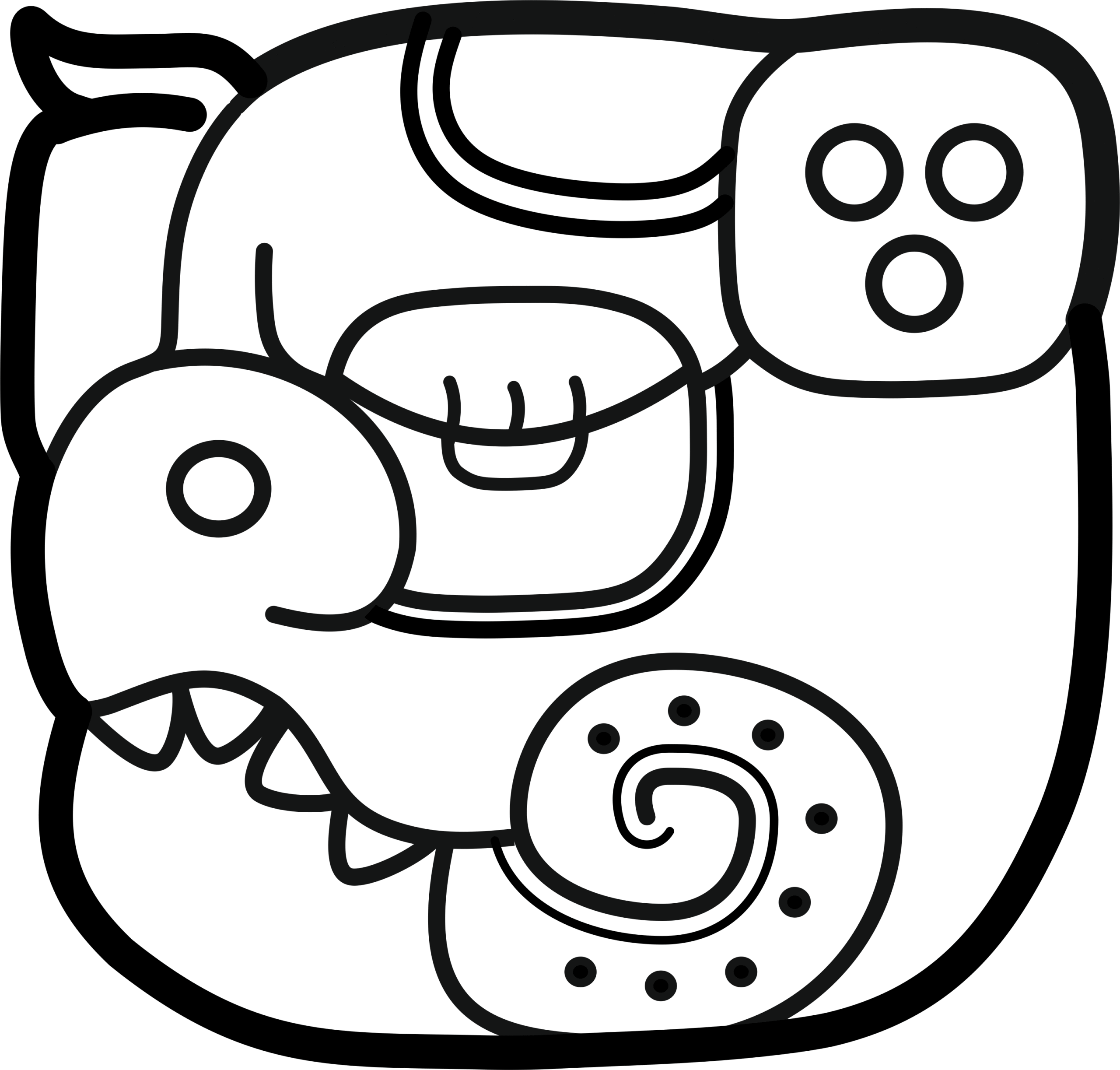 |
→ | 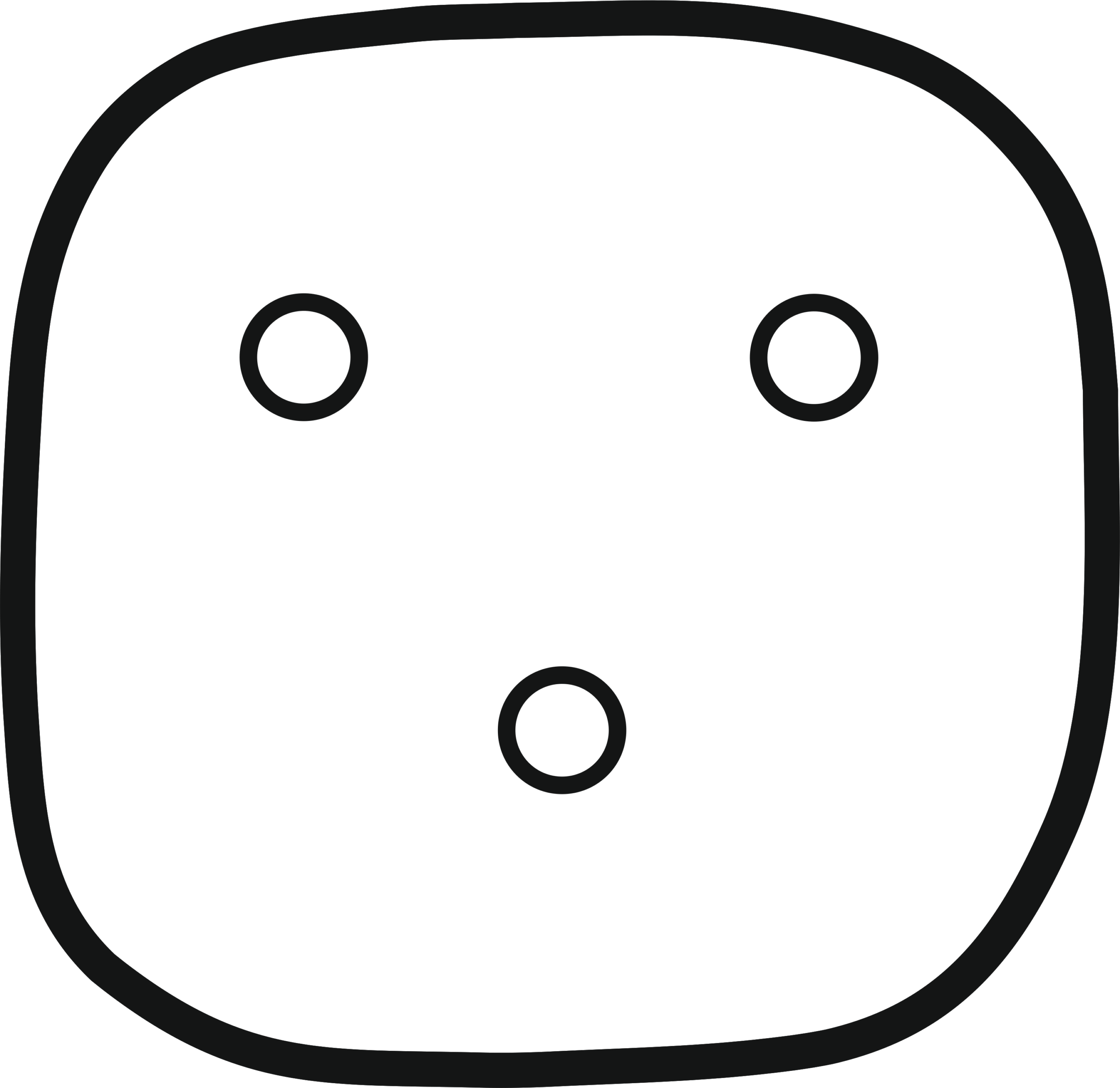 |
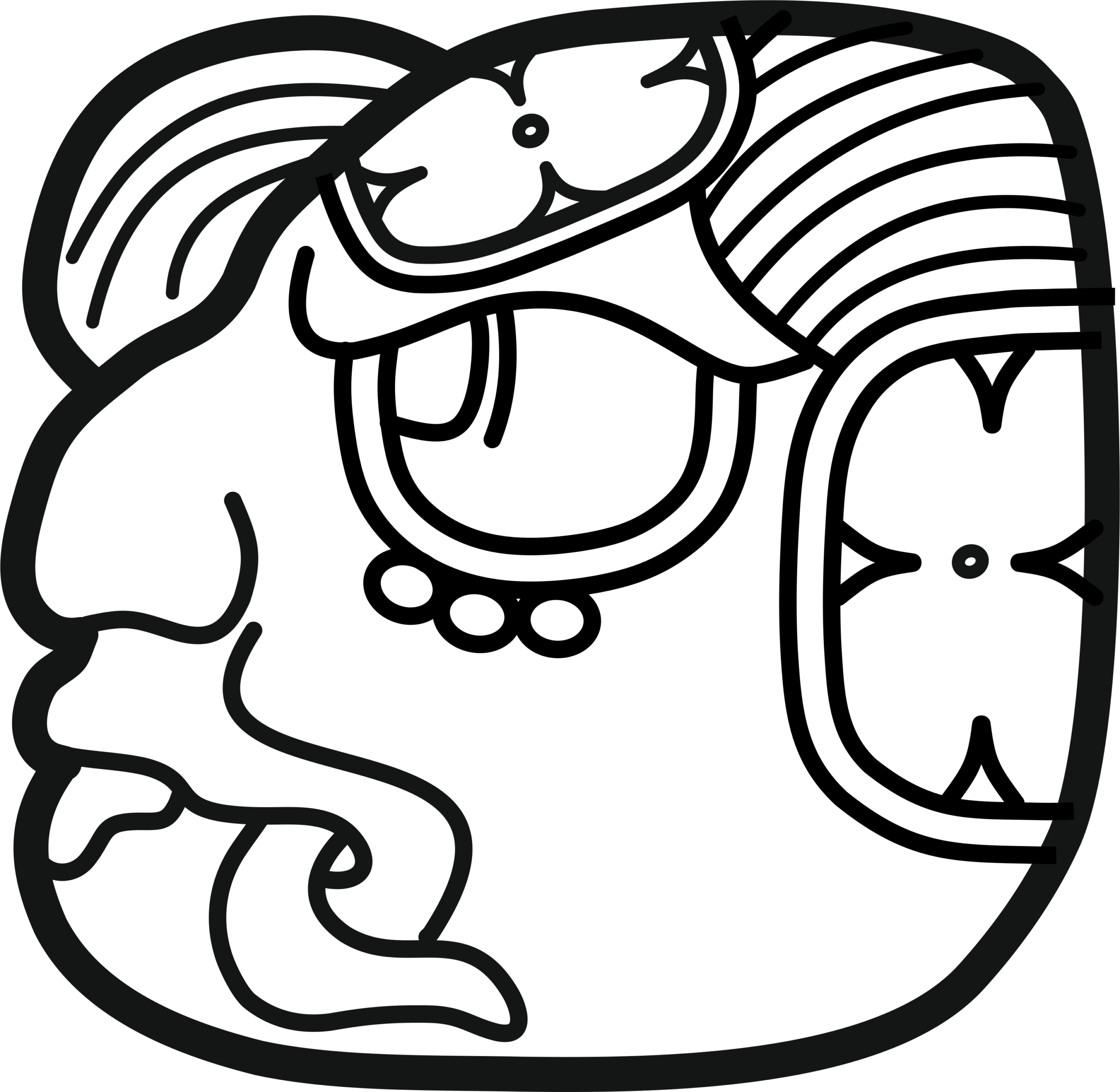 |
→ | 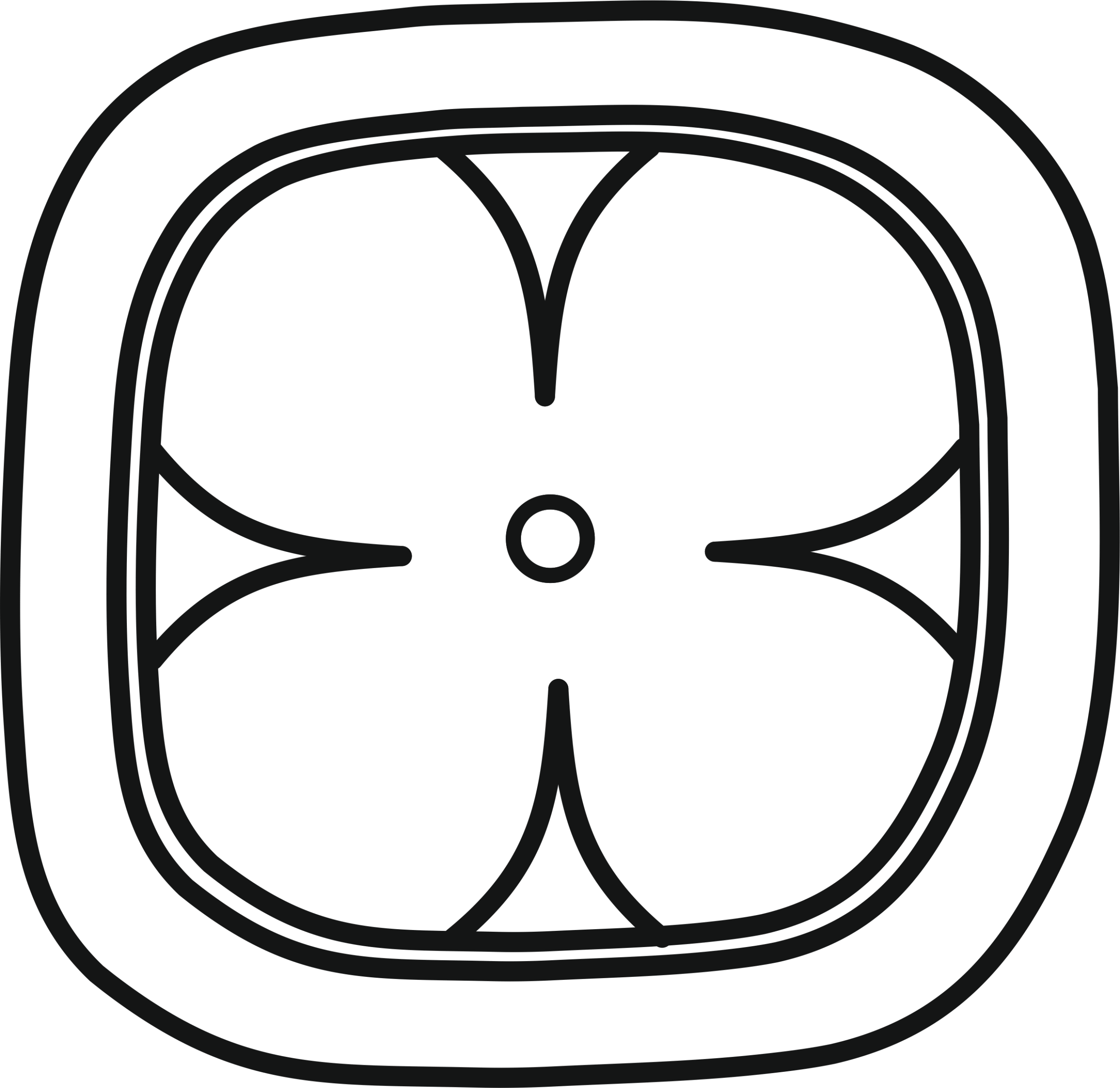 |
|---|---|---|---|---|---|
| full form | extraction | full form | extraction | ||
| 524st | 524ex | 680st | 680ex | ||
| a | b |
There are also examples with multiple stages of extraction and simplification (Figure 4). However, this poses a problem in the taxonomy, because there is only one variant reserved for extraction. Subsuming all different stages under one variant ‘ex’ would undermine the scheme’s goal to provide very granular designations for statistical, graphotactic, and palaeographic investigations. To cover such cases, compromises need to be made to find the closest possible alternative designation according to the principles of the classification scheme (5).
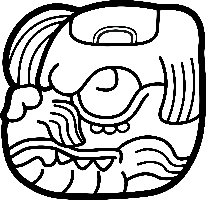 full form 204bv |
→ |  top part 204bt  extraction 204ex |
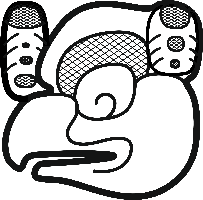 head form 99hc |
→ |  standard form 99st  extraction 99ex |
||
| a | b |
The so-called ‘Xoc-Fish’ (Thompson 1950:162) T738c was shown by Stuart (1990:219-220) to substitute for T204 in the ADI and PDI as the syllabogram u. It went unnoticed until the ‘New Catalog’ (Macri & Looper 2003) that old T204 is merely a simplified, compressed variant of T738c, with the mandible and the upper part of the cranium but without the mirror element. Thus only the eye, front and back fins, and the upper teeth remain. As the utmost possible reduction, we find just the upper teeth, the old T10, in the codices (Macri & Vail 2009), e.g., substituting for each other in u-ku-chi, u-kuch, ‘his burden’ in C. Dr. 18c. In order for this latter variant to be labelled ‘ex’, we decided to classify the old T204 as a ‘bt’ variant for the upper segment of a bipartite graph. This is only a makeshift solution, as 204bt does not entail a full retention of the cranium and thus does not qualify as a segment. Most importantly, however, there is a change in the outer contour, the prime argument for the principle of extraction (6).
Another sign is the so-called O’-Bird with three allographs (old T99, T279, T280, T694, and T1066), here assigned the sign number 99. The ‘ex’ variant is attested in the Landa ‘alphabet’, while the other variants were recognised by functionally equivalent substitutions in spellings of ko-o-ha-wa on PNG: P. 2. In its full form, as variant 99hc, we find an avian cranium with a black supraorbital area and two prominent spotted feathers. The large front feather seems to be the diagnostic body part and is used for extraction to create a narrow allograph with a wider range of graphotactic applications than the squarish full form. With the ‘st’ variant, we see not only extraction of one diagnostic feature, but abstraction of three features into a ‘main sign’ shape: the front feather, the beak, and the supraorbital part. Although simplified, these elements are retained in their anatomical order.
Allography by Merging Iconic Elements of the Graph
The manner in which the head of the O’-Bird is simplified into an abstracted version almost provides a role model for the actual focus of this article, the sign 539 WAY(Houston & Stuart 1989). It was originally dubbed ‘hidden lord’ or ‘jaguar lord’ by Linda Schele (1985; 1988:298) because of the iconographic components of the graph: the sign 533, possibly BAK(Gronemeyer & MacLeod 2010:49), SAK(Stuart in Tsukamoto 2014:287), or MOK(Polyukhovych 2015) – which is also used as the standard form of the day sign Ajaw– with one half of it covered by jaguar fur. Later, Grube and Schele (1994) found another WAY logogram on TIK: Alt. 5 featuring a jaguar head with the icon of sign 533 infixed in the eye. I propose that these two forms are not individual signs, but instead represent two allographs of the same (Figure 5) (7).
 |
→ |  |
|---|---|---|
| full form | extraction | |
| 539st | 539ex |
Initially, it seems that the process through which the eye of the feline WAY is extracted is identical to the case of sign 524 HIX, but this method would only generate a ‘duplicate’ of sign 533. In order to create a unique graph, another distinctive part of the feline WAY icon is merged into the allograph: the spots on the fur. Therefore, and unlike in the simplification of 99hc to 99st, different anatomical features of feline WAY are merged into one another in the most quintessential way.
The classification of a full ‘standard’ and a simplified, ‘extracted’ allograph is, of course, above all a descriptive concept from modern perceptions of the script. It is not based on which allograph occurs first. In fact, for sign 99, for example, Grube’s (1990) survey suggests that 99ex is the earliest form and its ‘full forms’ are actually graphically ‘reverse engineered’ based on the underlying concept, as playful calligraphic variants. On the other hand, some more simple allographs are late (codical) inventions, like 204ex and 1506ex, and are definitely true extractions. Conversely, the pars pro toto allographs 524ex and 544ex are in fact the ‘standard’ in terms of quantity. Instead, the question maybe one of “economy in writing” (Gelb 1952:27) (8). But in contrast to how Gelb applies it in his evolutionary view, this term can also be used for principles of text composition. Writing can be made more economical by reducing the complexity of graphs, and hence the number of brush strokes or surface cuts (cf. Gronemeyer 2014:469, 473).
Whatever the direction in which allographic morphism proceeded in each individual case, comparison between related variants and their iconicity may shed a clearer view on underlying cultural concepts. Many way characters (Grube & Nahm 1994) represent nocturnal or otherworldly figures: jaguars, owls, fireflies, manifestations of death and death gods. There are specific onomastic patterns of species and their quality, associated places, actions and types of death or disease (Sheseña 2010). Several authors point out that in Colonial times as nowadays, the ability to transform into a ‘co-essence’ is reserved to religious specialists with certain powers (e.g. Villa Rojas 1947:582; de la Garza 1987:89-90). Such abilities and forces were possibly restricted to elite members in Classic times as well (Houston & Stuart 1989: 13).
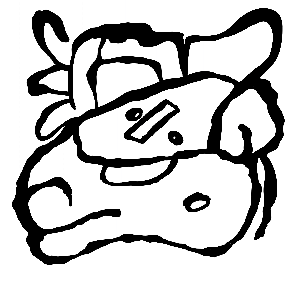
Likewise, the representation of the jaguar’s eye with the graph of sign 533 (and that graph’s use as the shape of the ‘ex’ form) has nothing to do with “lords” or its calendrical value as the day sign Ajaw (Thompson 1950:figs.10-11). Whatever reading may be correct, all instances of 533 occupy the semantic field of ‘maize’ or ‘(maize) grain’. Its graph represents the living, germinable maize kernel from which the new harvest grows and new life originates (cf. Carrasco 2005:15-16, Martin 2006:158-159) (11). The graph of sign 533 is the core element for a whole complex of agricultural rebirth and (royal) power iconography reaching back to Formative times (cf. Taube 1996; Guernsey 2011; Stuart 2012b:127). In a figurative sense, it represents the concept of life force, compare e.g., the k’a’-ay-i u-…k u-sak-ik’il expressions for death, meaning something like “it diminished her/his ‘life force’ and pure breath” (cf. Kettunen 2005, Gronemeyer & MacLeod 2010:49).
It has been noted that squarish god eyes often feature different inset designs, probably to express different qualities or types of sight (Houston, Stuart & Taube 2006:170). In the case of the full form of sign 539 showing the representation of a (maize) kernel, it may describe how liminal forces or creatures can create essence. In association with the rebirth concept, it may represent the cycle of transformation into a co-essence and wild nocturnal creature, and the rebirth as a human being into the ordered world with the new dawn. Both graph variants of 539 thus represent this dualism.
Conclusions and Implications
The appearance of several – this is at least the impression – of the more complex forms later in the history of the script’s graphemic lexicon and their much less frequent usage leads to an intriguing thought. One notices that many of the ‘genuine’ head signs (either human, zoomorph, or supernatural) are scarcely attested in the corpus and thus resist secure decipherment or even narrow approximation of their semantic domain. Of all the human head signs listed in the “P” category of the ‘New Catalog’ (Macri & Looper 2003), for instance, a quick scan reveals that about half are still undeciphered. Many have modifications of or around the eyes, and Category “S” reveals a similar impression. It may be noteworthy to consider that a small number of these head glyphs have been found to just represent a complex or ‘full form’ of signs that had been previously deciphered. These glyphs resisted decipherment for longer not only because of their limited occurrences, but also because their contexts were not clear enough in comparison with the previously deciphered forms.
The most serious challenge in investigating connections between these head glyphs and other signs is lack of understanding of cultural concepts underlying the relation between simplified and abstracted graphs and the complex forms. However, this is not the only problem; even more difficult to assess are graphic transformations based on emic observations of the environment or the chain(s) of associations encoded in a graph. For example, it is not always clear why specific anthropomorphic or zoomorphic crania are used to create allographic head variants of one sign. There is seldom – if at all – any variety in representations of a given variant. The head variant of sign 585 BIH / bi, for example, is always realised with a snake head. Two possible explanations for this case come to mind: it is because snakes can easily be encountered walking down a road or because of the homophony between chan “four” (the number of cardinal directions) and “snake” (Houston 1984). A third, homophonous word chan for “sky” explains why the celestial band is sometimes represented by a snake or reptilian body (Wichmann 2004:16).
I propose that, in future efforts to decipher unknown signs, we need to consider not only context when searching for substitutions. We should also include meticulous comparison of each iconic element of the graph in question with other graphs, as well as meta-levels of graphic representation. With the digital catalogue created by our project, each graph will be tagged using terms from a controlled vocabulary to describe the nature of its iconicity. This practice will facilitate such comparisons in the future.
Acknowledgements
I would like to thank Nikolai Grube, Catherine Letcher-Lazo, Mallory Matsumoto, Christian Prager, and Elisabeth Wagner for additional input and information. Mallory Matsumoto also kindly corrected the English of the original draft.
References
Berlin, Heinrich
1963 The Palenque Triad. Journal de La Société Des Américanistes 52(1): 91–99.
Carrasco, Michael
2005 The Mask Flange Iconographic Complex: The Art, Ritual, and History of a Maya Sacred Image. Ph.D. Dissertation, Austin, TX: University of Texas.
de la Garza, Mercedes
1987 Naguales mayas de ayer y de hoy. Revista española de antropología americana 17: 89–105.
Gardiner, Alan
1957 Egyptian Grammar: Being an Introduction to the Study of Hieroglyphs, Third edition. Oxford:
Griffith Institute, Ashmolean Museum.
Gronemeyer, Sven
2014 The Orthographic Conventions of Maya Hieroglyphic Writing: Being a Contribution to the Phonemic Reconstruction of Classic Mayan. Ph.D. Dissertation, Melbourne: Department of Archaeology, La Trobe University. http://hdl.handle.net/1959.9/321048.
Gronemeyer, Sven, & Barbara MacLeod
2010 What Could Happen in 2012: A Re-Analysis of the 13-Bak’tun Prophecy on Tortuguero Monument 6. Wayeb Notes 34: 1–68.
Grube, Nikolai
1990 Die Entwicklung der Mayaschrift: Grundlagen zur Erforschung des Wandels der Mayaschrift von der Protoklassik bis zur spanischen Eroberung. Acta Mesoamericana 3. Berlin: Von Flemming.
Grube, Nikolai, & Maria Gaida
2006 Die Maya: Schrift und Kunst. Berlin & Köln: DuMont Literatur und Kunst.
Grube, Nikolai, & Werner Nahm
1994 A Census of Xibalba: A Complete Inventory of Way Characters on Maya Ceramics. In The Maya Vase Book: A Corpus of Rollout Photographs of Maya Vases; Volume 4, edited by Barbara Kerr and Justin Kerr, 686–715. New York, NY: Kerr Associates.
Grube, Nikolai, & Linda Schele
1994 Tikal Altar 5. Texas Notes on Precolumbian Art, Writing, and Culture 66. Austin, TX: Center of the History and Art of Ancient American Culture, Art Department, University of Texas at Austin.
Guernsey, Julia
2011 Signifying Late Preclassic Rulership: Patterns of Continuity from the Southern Maya Zone. In The Southern Maya in the Late Preclassic: The Rise and Fall of an Early Mesoamerican Civilization, edited by Michael Love and Jonathan Kaplan. Boulder, CO: University Press of Colorado.
Houston, Stephen D.
1984 An Example of Homophony in Maya Script. American Antiquity 49 (4): 790–805.
Houston, Stephen D., & David Stuart
1989 The Way Glyph: Evidence for ‘Co-Essences’ among the Classic Maya. Research Reports on Ancient Maya Writing 30. Washington, D.C.: Center for Maya Research.
Houston, Stephen D., David Stuart, & Karl A. Taube
2006 The Memory of Bones: Body, Being, and Experience among the Classic Maya. Austin, TX: University of Texas Press.
Kerr, Justin 2007 A Possible Explanation of the Origin of the Form of the “WAY” Glyph. FAMSI Journal of the Ancient Americas. http://research.famsi.org/aztlan/uploads/papers/Kerr-Way-Glyph.pdf.
Linden, John H.
1996 The Deity Head Variants of Glyph C. In Eighth Palenque Round Table, 1993, edited by Martha J. Macri and Jan McHargue, 343–356. Palenque Round Table Series 10. San Francisco, CA: Pre-Columbian Art Research Institute.
Macri, Martha J., & Matthew G. Looper
2003 The New Catalog of Maya Hieroglyphs: The Classic Period Inscriptions. Civilization of the American Indian Series 247. Norman, OK: University of Oklahoma Press.
Macri, Martha J., & Gabrielle Vail
2009 The New Catalog of Maya Hieroglyphs: The Codical Texts. Civilization of the American Indian Series 264. Norman, OK: University of Oklahoma Press.
Martin, Simon
2006 Cacao in Ancient Maya Religion: First Fruit from the Maize Tree and Other Tales from the Underworld. In Chocolate in Mesoamerica: A Cultural History of Cacao, edited by Cameron L. McNeil, 154–83. Gainesville, FL: University Press of Florida.
Martin, Simon, & Dorie J. Reents-Budet
2010 A Hieroglyphic Block from the Region of Hiix Witz, Guatemala. The PARI Journal 11(1): 1–6.
Polyukhovych, Yuriy
2015 A Possible Phonetic Substitution for T533 or “Ajaw Face" (Report 33). Glyph Dwellers. Electronic Document (October 14, 2019). http://myweb.csuchico.edu/~mlooper/glyphdwellers/pdf/R33.pdf.
Prager, Christian M., & Sven Gronemeyer
2018 Neue Ergebnisse in der Erforschung der Graphemik und Graphetik des Klassischen Maya. In Ägyptologische ‘Binsen’-Weisheiten III: Formen und Funktionen von Zeichenliste und Paläographie, edited by Svenja A. Gülden, Kyra V. J. van der Moezel, and Ursula Verhoeven-van Elsbergen, 135–181. Akademie der Wissenschaften und der Literatur, Abhandlungen der Geistes- und sozialwissenschaftlichen Klasse 15. Stuttgart: Franz Steiner Verlag.
Quenon, Michel, & Geneviève Le Fort
1997 Rebirth and Resurrection in Maize God Iconography. In The Maya Vase Book: A Corpus of Rollout Photographs of Maya Vases; Volume 5, edited by Barbara Kerr and Justin Kerr, 884–902. New York, NY: Kerr Associates.
Schele, Linda
1985 Balan-Ahau: A Possible Reading of the Tikal Emblem Glyph and a Title at Palenque. In Fourth Palenque Round Table, 1980, edited by Elizabeth P. Benson, 59–65. The Palenque Round Table Series 6. San Francisco, CA: The Pre-Columbian Art Research Institute.
1988 The Xibalba Shuffle: A Dance after Death. In Maya Iconography, edited by Elizabeth P. Benson and Gillett G. Griffin, 294–317. Princeton, NJ: Princeton University Press.
1991 Notebook for the XVth Maya Hieroglyphic Workshop at Texas, March 9-10, 1991. Austin, TX: Department of Art and Art History, the College of Fine Arts, and the Institute of Latin American Studies.
Schele, Linda, & Mary E. Miller
1986 The Blood of Kings: Dynasty and Ritual in Maya Art. New York, NY: George Braziller.
Sheseña, Alejandro
2010 Los Nombres de Los Naguales En La Escritura Jeroglífica Maya: Religíon y Lingüística a Través de La Onomástica. Journal of Mesoamerican Languages and Linguistics 2 (1): 1–39.
Stuart, David
1985 The “Count-of-Captives” Epithet in Classic Maya Writing. In Fifth Palenque Round Table, 1983, edited by Virginia M. Fields, 97–101. The Palenque Round Table Series 7. San Francisco, CA: The Pre-Columbian Art Research Institute.
1990 The Decipherment of “Directional Count Glyphs” in Maya Inscriptions. Ancient Mesoamerica 1(2): 213–224.
1995 A Study of Maya Inscriptions. Ph.D. Dissertation, Nashville, TN: Vanderbilt University.
2012a The Hieroglyphic Stairway at El Reinado, Guatemala. Maya Decipherment. Electronic document (October 9, 2019). http://www.mesoweb.com/stuart/notes/Reinado.html.
2012b The Name of Paper: The Mythology of Crowning and Royal Nomenclature on Palenque’s Palace Tablet. In Maya Archaeology 2, edited by Charles Golden, Stephen D. Houston, and Joel Skidmore, 116–42. San Francisco, CA: Precolumbia Mesoweb Press.
Taube, Karl A.
1992 The Major Gods of Ancient Yucatan. Studies in Pre-Columbian Art and Archaeology 32. Washington, D.C.: Dumbarton Oaks Research Library and Collection.
1996 The Olmec Maize God: The Face of Corn in Formative Mesoamerica. RES: Anthropology and Aesthetics, no. 29–30: 39–81.
Thompson, J. Eric S.
1950 Maya Hieroglyphic Writing. An Introduction. Carnegie Institution of Washington Publication 589. Washington, D.C.: Carnegie Institution of Washington.
1962 A Catalog of Maya Hieroglyphs. The Civilization of the American Indian Series 62. Norman, OK: University of Oklahoma Press.
Tsukamoto, Kenichiro
2014 Politics in Plazas: Classic Maya Ritual Performance at El Palmar, Campeche, Mexico. Ph.D. Dissertation, Tucson, AZ: University of Arizona.
Villa Rojas, Alfonso
1947 Kinship and Nagualism in a Tzeltal Community, Southeastern Mexico. American Anthropologist 49 (4): 578–87.
Wichmann, Søren
2004 El concepto de camino entre los mayas a partir de las fuentes epigráficas, iconográficas y etnográficas. In La metáfora en Mesoamérica, edited by Mercedes Montes de Oca Vega, 13–32. Mexico City, Instituto de Investigaciones Filológicas, UNAM.
Footnotes
-
One example commonly referred to (cf. Stuart 1995:38) are readings with 168bt AJAW, where e.g., substitutions of the counted K’atun title prove that the standard graph order ‘number’-AJAW-WINIKHAB reads ‘number’ winikhab ajaw. The Emblem Glyph would be another instance. But Lounsbury (1973:134) may already have provided the most compelling explanation: that the arbitrariness of reading orders is the result of spelling conventionalisation. Consider Egyptian writing, where god names are usually put in first position (Gardiner 1957:§57). If the appearance of the upper part of the AJAW sign 168 always involved superimposition with an inherent change of reading order, the usual graphotactics of expressions like ti-AJAW-le for ti ajaw-le[l](e.g. CNC: P. 1, J2) would violate this rule. An Emblem Glyph on UXM: Alt. 10, D1-E1 confirms this with e-wi-tzi-AJAW-wa for e[’] witz ajaw, in which 168bt AJAW is written after the toponym. This, in my opinion, clearly indicates that the Maya perceived their hieroglyphs as multipartite entities, where each segment could be used as if it were the full form.
-
As a general rule, the sign numbers applied by the project follow Thompson (1962) when there is a direct correspondence (e.g. T12 = sign 12 = as variant ‘st’ for AJ/ a), or there is an implicit concordance or merger of multiple signs in his classification (e.g. T181 and T683b = sign 181 as variants 181br and 181bh for ja); in the latter case, the more common or unambiguous sign number is used. As T683a instead represents the number “20” (Stuart 1985:98), Thompson’s T683 combined what are actually two different signs, and the number 683 is thus discontinued in the new sign catalogue. New classifications start with the sign number 1500.
-
In this case, the ‘New Catalog’ (Macri & Looper 2003) indeed correctly merged both T-Numbers, subsuming them under the three-digit code ST7.
-
In the ‘New Catalog’ (Macri & Vail 2009), both variants T741a and 1506ex are recorded under AA7, but also with both readings e and WINAL/ WINIK.
-
One has to keep in mind that the allograph taxonomy is less an emic classification than a descriptive one. I am fully aware that no classification scheme can possibly ever cover any type of variation while still being manageable.
-
Among the types of allomorphy with outline shape modification, there is also ‘multiplication’ (Prager & Gronemeyer 2018:168-170), as is not uncommon for the sign 25 ka, e.g. on DPL: HS. 3-II, B2 in chu-ka-ja. Several signs whose graph represents an anatomical part, usually in profile view, can also be ‘duplicated' so as to appear in front view. Sign 204 has a unique example of this on YAX: HS. 5, 156, in i-u-ti. Another example is the mandible sign 590 cho which is only rarely displayed with both joints, e.g. YAX: HS. 5, 42, in cho-ko.
-
Although the full form proposed here does not have a T-Number, it was included as AT2 in the ‘New Catalog’ (Macri & Looper 2003), while old T539 became AM7. Its placement into the category “animals, monkeys” seems doubtful, though, with saak as “seed” and the graph icon representing a (maize) kernel.
-
This principle was originally postulated as “[…] the effective expression of the language by means of the smallest possible number of signs.”
-
Kerr (2007) considered the iconography of throne cushions functioning as “sacred bundles” to be the origin of the graph icon.
-
This is also true for the nocturnal aspect of the Sun God GIII as a feline transformation, the so-called ‘Jaguar God of the Underworld’ (Schele & Miller 1986:50).
-
Compare this to e.g., the very same representation of the maize kernel on several ceramics (e.g. K634, K2723) with a serrated cleft from which the Maize God emerges in rebirth (Quenon & Le Fort 1997:891). Also, compare to the head variant of 533, which is always a zoomorphic, skeletal head representing an underworld quality, where the seed creates the skullcap of the cranium. This may relate to the kernel in the ‘underworld’ of the milpa once it has been sown. Also note how a new cacao plant grows from interred bones on the Berlin ‘Transfiguration Tripod’ (Grube & Gaida 2006:127), while the roots are formed by the now-reborn deceased.